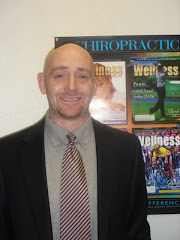There is help out there for managing pain – whether from a car smash-up, sports injury, workplace accident or disease – if you’re willing to look further than your family doctor for alternatives to drugs.
Chronic pain is a silent epidemic affecting some 10 million Canadians. Although there are many types of chronic pain and many pain levels, the universe of pain shares some common issues. Most family doctors know little about chronic pain and offer little in a 10-minute visit. Although some GPs take a special interest in pain treatment, many prefer not to deal with often-difficult patients. Whether justified or not, pain patients frequently say they are angry and frustrated with the cursory treatment they receive.
There’s also a lot of needless suffering. Some people won’t take medication for fear they’ll become a vegetable or an addict. The big guns in today’s pain arsenal are the narcotics derived from morphine or codeine. However, physicians often refuse to prescribe them in sufficient quantities because of addiction concerns. In addition, most people won’t get complete relief with narcotics. These drugs just “take the edge off” leaving the patient feeling drowsy and disoriented. Experts agree it’s better to learn alternative pain management techniques.
In the conference room at Burnby’s Thorson Health Centre there is a lively group of physicians, chiropractors, physiotherapists, psychologists, counselors and technicians who are brainstorming complex issues. “We encourage personal growth and help clients accept responsibility for their physical and emotional well-being,” says Thorson. At the clinic that’s done with support and education, plus treatments such as nerve blocks, trigger point therapy, group work, biofeedback, stress management, psychotherapy, hypnotherapy, physiotherapy, massage, chiropractic, nutrition, exercise and acupuncture.
Neuropathic pain, or pain resulting from a damaged nerve, is another type of chronic pain. Dr. Chan Gunn, head of the Institute for the Study and Treatment of Chronic Pain (iSTOP) uses IMS or intramuscular stimulation to ease nerve pain. Therapy involves inserting long, thin needles of up to several inches in length, into the constricted part of the muscle, also known as the “knot” or trigger point. When introduced accurately, the muscle will contract and grab the needle and then relax. Gunn claims to resolve acute neuropathic problems in one or two visits, though some cases take longer.
At the Comox Valley Nursing Centre, nurses assist patients in the management of their chronic pain. Clients can attend a chronic pain education program, join relaxation, exercise or therapeutic swim classes or participate in a chronic pain support group. Most important says Diane Lewis, a nurse in the program, is that they get plenty of time and support.
Farabloc, is another pain relieving device. It is the invention of Frieder Kempe whose father suffered phantom leg pain after being wounded in 1944 and losing his leg. Kempe realized that his father’s scar had no healthy skin covering, hence no protection from electro-magnetic fields. By 1978, he’d developed a thin fabric cloth with interwoven metal fibres that significantly reduced his father’s pain. The product, called Farabloc, is produced at Kempe’s Coquitlam factory. Manufactured in many shapes and sizes and sold across the globe, it has proven to reduce phantom limb pain and delay the onset of muscle soreness experienced by athletes. German researchers are currently studying its effectiveness with painful fibro-myalgia.
Chronic pain disables more people than cancer or heart disease. For many, their best hope is contained with multi-disciplinary clinics with offer a variety of treatment options.
SOURCE: BC BUSINESS (Burnaby, Canada) June 2003, pp. 38+ Original article by Vicki O’Brien
Saturday, February 7, 2009
Subscribe to:
Post Comments (Atom)



No comments:
Post a Comment